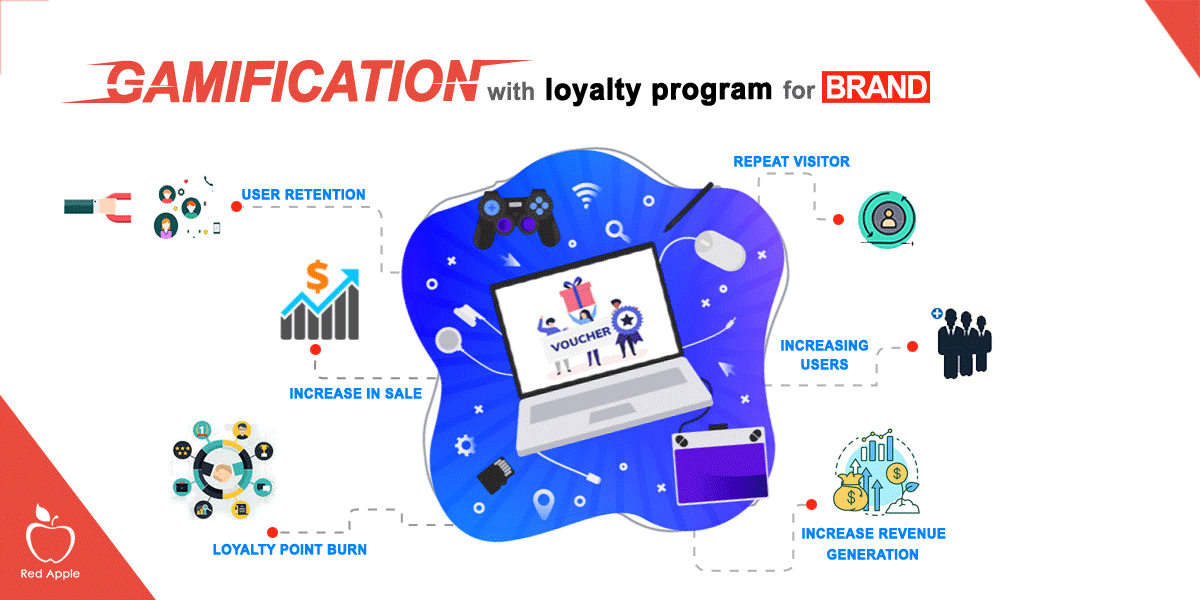
Gamification in the workplace can make the work even more engaging. This also helps the organization to achieve their objectives. Not only theoretical aspects, but gamification can also bring on behavioural changes amongst the employees. According to a survey conducted in 2016, it is estimated that approx. 50% of the Global 1000 companies will start using gamification to bring about transformation in their business operations.
Introduction and Current Trends of Gamification
What is gamification? Gamification is the process of converting existing components into games. In the process the already existing products such as website, application, online forums, or anything else, is modified by integrating game mechanics. Converting these existing products into games motivates participants, and promotes engagement and loyalty.
Gamification works on a simple concept—more fun to get more work done. According to Gabe Zichermann—author of The Gamification Revolution—”when you reward customers for engaging in fun activities, they engage more often and deeply.” It is also recorded that 55% Americans desire to work for companies that use gamification to enhance productivity.
There are four trends that gamification industry focuses on:
- Exploiting social media usage
- Mobile first approach
- Big data
- Wearable computation
Gamification has a significant impact on the corporate sector. Its various benefits for the organization makes it one of the highly adopted employment fads.
Gamification Increase Employee Engagement
Generally, gamification has proven to be comparatively more effective than textual or other forms of content, when it comes to engagement. By adding gaming elements to general activities any component can be gamified.
There are various elements in games development which makes them interesting. One of the most common reason why gamification increase employee motivation is the sense of achievement. The progressing level of difficulties and increasing rewards is what makes employee invested in the game; and this subconsciously adds to the motive of gamification.
Gamification would not involve developing heavy 3D games with pro-level graphics. Basic games that are relevant to employees’ daily job role can get the employees engaged. This can work wonders if it adds value to their activities and make things even more comprehensible.
Key Aspects of Gamification:
Raja Paharia is the founder of Bunchball and has authored “Loyalty 3.0: How to Revolutionize Employee and Customer Engagement with Big Data and Gamification.” He has suggested “The 10 Key Mechanics of Gamification” which are:
- Faster feedback
- Transparency
- Goals/Objectives
- Badges/rewards
- Level progression
- Onboarding
- Competition
- Sense of collaboration/teamwork
- Community
- Points
Remember that gamification for employee engagement will not be helpful if the employee is not interested to participate.
Gamification for Motivation in Mobile Game Development Companies
For any mobile game development company in Texas, and for that matter anywhere, gamification is an inhouse activity. These companies have the expertise and resources to come up with professional games. Following are the factors that mobile game development companies focus on:
- Providing a learning experience to employee through gamification
- Reward the best support team member based on speed and support quality
- Rewarding best sales team member
- Motivate employees to learn and grow in their field
- Allow employees to share information on social network about the company.
Conclusion:
With the technological advancement, content consumption preference is also changing. People are preferring videos and simulated content over text. Gamification is one such format that is highly preferred these days.
There are many industries which has opted for using gamification in the workplace. Gamification increases employee motivation. Employing a good mobile game development company in Texas can help you instigate this new fad of gamification for employee engagement. Gamification is the next big thing in the industry.






























 Book an Appointment
Book an Appointment Get Instant Project Estimation
Get Instant Project Estimation WhatsApp Now
WhatsApp Now






 Book An Appointment
Book An Appointment WhatsApp
WhatsApp







